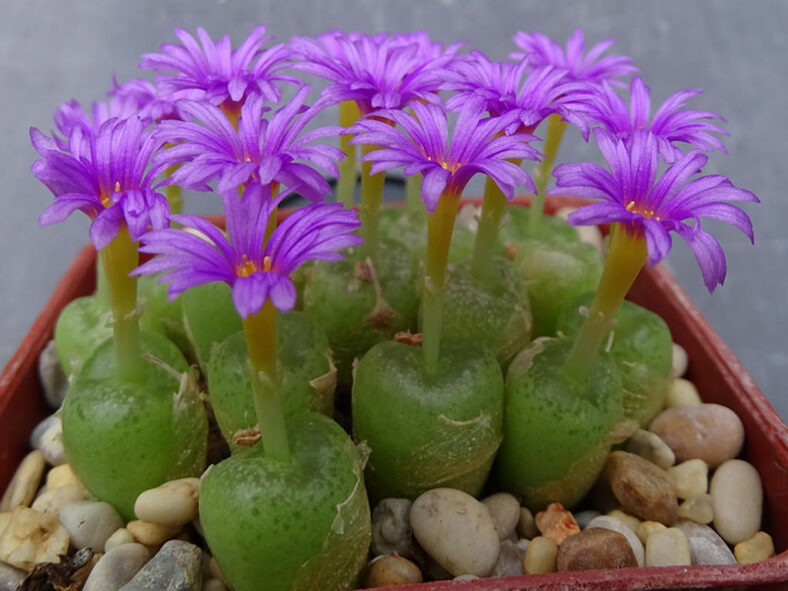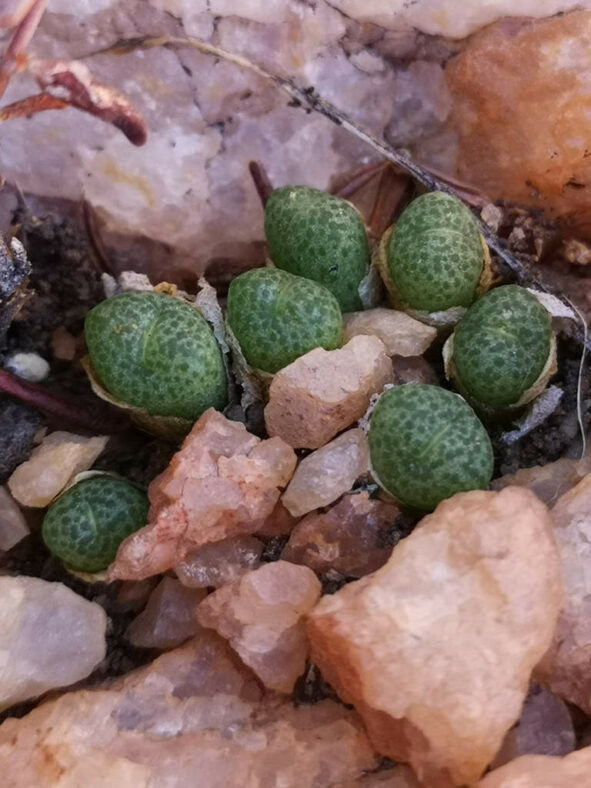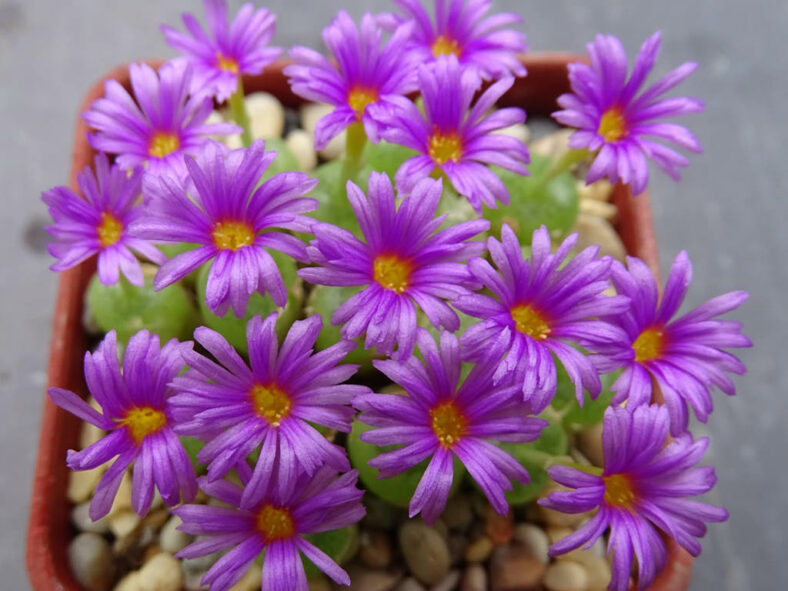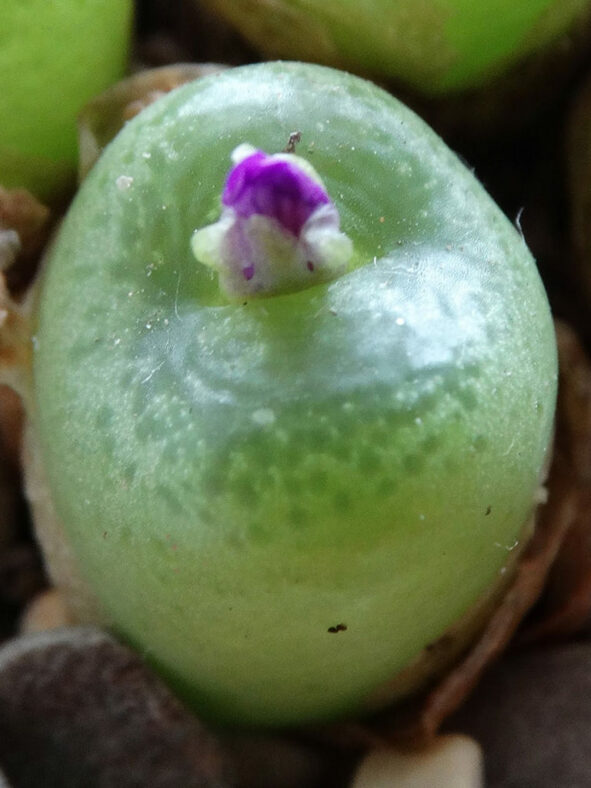Scientific Name
Conophytum hermarium (S.A.Hammer) S.A.Hammer
Synonym(s)
Conophytum smorenskaduense subsp. hermarium
Scientific Classification
Family: Aizoaceae
Subfamily: Ruschioideae
Tribe: Ruschieae
Genus: Conophytum
Etymology
The specific epithet "hermarium (pronounced her-MAH-ree-um)" is of uncertain origin.
Origin
Conophytum hermarium is native to South Africa. It grows in crevices in hard quartzite blocks in the Northern Cape province.
Description
Conophytum hermarium is a dwarf succulent that forms a small clump of cylindrical bodies with a depressed central fissure at the apex. The bodies consist of two thick, fleshy, almost entirely fused leaves. They can grow up to 0.9 inches (2.2 cm) tall and 0.4 inches (1 cm) in diameter. The epidermis is yellowish-green and covered with tiny, translucent, slightly raised blisters at the upper surface.
The long-lasting flowers are solitary, diurnal, and magenta-colored and appear from the fissure in winter.

How to Grow and Care for Conophytum hermarium
Light: This succulent needs bright light but does not like too much direct sun. To avoid sunburn, place your C. hermarium in a position to receive a few hours of full sun in cooler periods of the day. The plant stretches if it needs more light.
Soil: C. hermarium thrives best in porous soil mixes that allow water to drain away quickly. Use a commercial potting mix specially designed for growing succulents, or make your own.
Temperature: High temperatures are not a problem, but the plant can be damaged when the temperature drops below freezing. C. hermarium can withstand temperatures as low as 35 °F (1.7 °C). USDA Plant Hardiness Zones 10b to 11b, 35 to 50 °F (1.7 to 10 °C).
Watering: When dormant in the spring, C. hermarium requires little or no water. When it begins to grow again in the fall, it is safe to water deeply, allowing the soil to dry before between waterings. If leaves start to wrinkle during active growth, your plant needs water.
Fertilizing: This small succulent is a light feeder and does not need fertilizer if repotted every two years.
Repotting: The best time to repot C. hermarium is at the beginning of the active growth period, but it can be done almost any time while the plant is actively growing.
Propagation: This species is usually grown from seeds. Like all Conophytums, it is also easily propagated by division. The best time to divide C. hermarium is in late summer or early fall before it begins to break dormancy or after it has flowered. Sow the seeds in the fall in a pot with a well-drained soil mix.
Learn more at How to Grow and Care for Conophytum.
Toxicity of Conophytum hermarium
C. hermarium is non-toxic and safe to grow around children and pets.
Links
- Back to genus Conophytum
- Succupedia: Browse succulents by Scientific Name, Common Name, Genus, Family, USDA Hardiness Zone, Origin, or cacti by Genus
Photo Gallery
Click on a photo to see a larger version.


